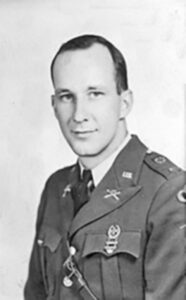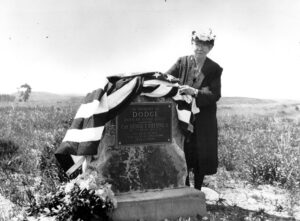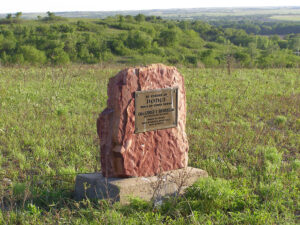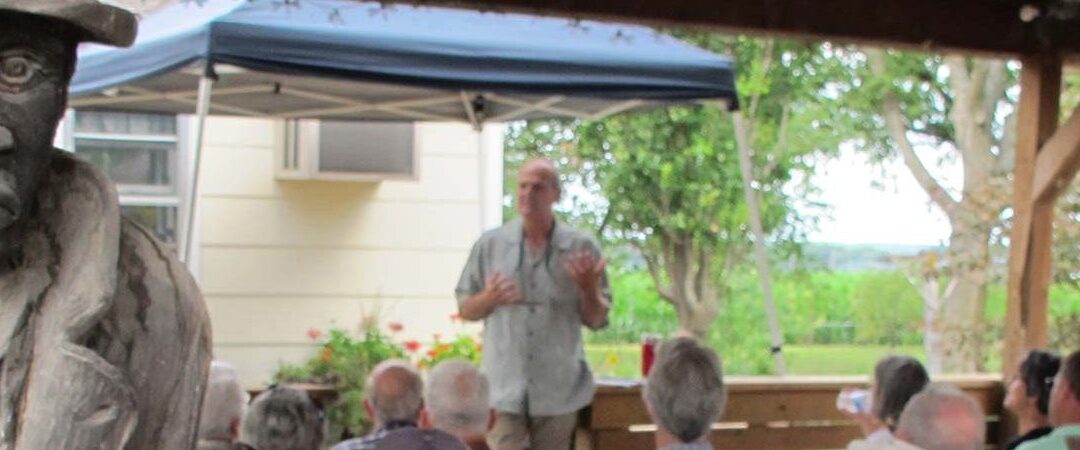
DODGE FIELDING (1917-1945)
 George Temple Fielding, III, called “Dodge”, was the grandson of George Temple Fielding, pioneer businessman and two-time mayor of Manhattan, Kansas. He was a cousin of the William Mitchell family, who owned Mount Mitchell. Captain Mitchell’s wife, Mary Chamberlain Mitchell, had a sister, Josephine, who married William Temple Hornaday, the famous pioneer environmentalist and founder of what is now the Bronx Zoo in New York. Their only child, Helen, married George Temple Fielding II, and they had three children, George, Lorraine, and Temple Hornaday Fielding. Temple was the author of the widely used Fielding’s Guide to Europe. George was a 1939 graduate of Princeton University, where he received honors as an ROTC cadet.When World War II broke out he enlisted and was sent to the Pacific Theatre where he was killed in action. The following tribute was written by his brother Temple.
George Temple Fielding, III, called “Dodge”, was the grandson of George Temple Fielding, pioneer businessman and two-time mayor of Manhattan, Kansas. He was a cousin of the William Mitchell family, who owned Mount Mitchell. Captain Mitchell’s wife, Mary Chamberlain Mitchell, had a sister, Josephine, who married William Temple Hornaday, the famous pioneer environmentalist and founder of what is now the Bronx Zoo in New York. Their only child, Helen, married George Temple Fielding II, and they had three children, George, Lorraine, and Temple Hornaday Fielding. Temple was the author of the widely used Fielding’s Guide to Europe. George was a 1939 graduate of Princeton University, where he received honors as an ROTC cadet.When World War II broke out he enlisted and was sent to the Pacific Theatre where he was killed in action. The following tribute was written by his brother Temple.
Alma Signal Enterprise June 5, 1947
The members of Ed. Palenske Post No. 32, of Alma, had charge of the Memorial Day services at the Wabaunsee Cemetery.
After the Wabaunsee services the thirty-two members of the Post present went to the Mitchell farm in Wabaunsee township, where a stone with bronze tablet had been erected to the memory of Captain George T. Fielding III, who was killed in action at Luzon. The monument was dedicated by the Legion to all service men who lost their lives in the war, and to Captain Fielding.
The following story was written by Temple Fielding, a brother of Captain Fielding, but was received too late for publication Memorial Day:
In his early boyhood, one of life’s greatest adventures for George was to return to the land of his people. Grandfather Fielding was several times Mayor of Manhattan, a pillar in the community; Father Fielding was a proud graduate of the wheat fields, the local schools and the State College. They were Kansas. By blood and choice, so was young “Dodge.”
It was 1926 when he made his boldest expedition. He was passing his second summer at the Big Four Ranch [the Mitchell farm] near Wamego, a quiet earnest boy of ten. Miss Maude Mitchell, his cousin, packed a lunch for the pirates—Junior Bright, age nine, was his companion—and together they trudged across the road and up the steep hill, which smiles over the countryside. As an afterthought, Miss Mitchell tucked a ten-cent bag of clover seed into their parcel.
They spent a long day on top of their mountain, searching for arrowheads, playing Captain Kidd, munching sweet drumsticks from the lunch box, watching the wind in the golden sea below. Dodge planted the clover with tender care; Junior sunned himself on a rock and made up yarns about the cotton clouds. Before darkness fell, they returned to the farmhouse, happy in the accomplishment of their perilous mission.
As the years passed, Dodge grew away from the soil, but he never forgot it. Eastern schools claimed him. He graduated from Princeton with Highest Honors in 1939. The University gave him the White Cup, a symbol for performance in the ROTC; they knew a soldier when they saw one.
In battle, percentages too often run out. He volunteered for the National Guard in 1940, and during his three years in the Pacific he fought as a forward observer, survey officer, and reconnaissance officer—the riskiest assignments in Field Artillery. At Munda he was personally commended by Lt. General Harmon, Supreme Commander of the invasion; in New Guinea he was awarded the Bronze Star; later he was recommended for the Legion of Merit. But no soldier can land with the first wave forever; his chapter was closed when a Jap grenade exploded during the last major campaign of the war.
Twenty-one years is a lifetime to many men, but to clover it is a fleeting second of time. The seeds this youngster planted multiplied with two decades of passing seasons. On top of the hill there now stretches a soft rich blanket, a blaze of color which can be seen from miles around. The American Legion men of Alma were there on Memorial Day; so was “Aunt Maude,” Hal Weaver and other friends.
The surviving members of his family—Connecticut, Michigan, New York, California, and five other states—have chosen this flowering hilltop as the site most suitable as a living memorial. On a large rock in the center of the pink patch was placed a bronze tablet. It says:
Captain George T. Fielding III. 192nd F.A. Bn., 43rd Div., U.S.A. Killed in Action near Manila. P.I. April 30, 1945. Aged 28 years.
Then simply and quietly, “In memory of Dodge—Doer of Good Deeds.”
Because the memory of Dodge and our thousands of Dodge’s will live as long and spread as heartily as the Kansas clover.



